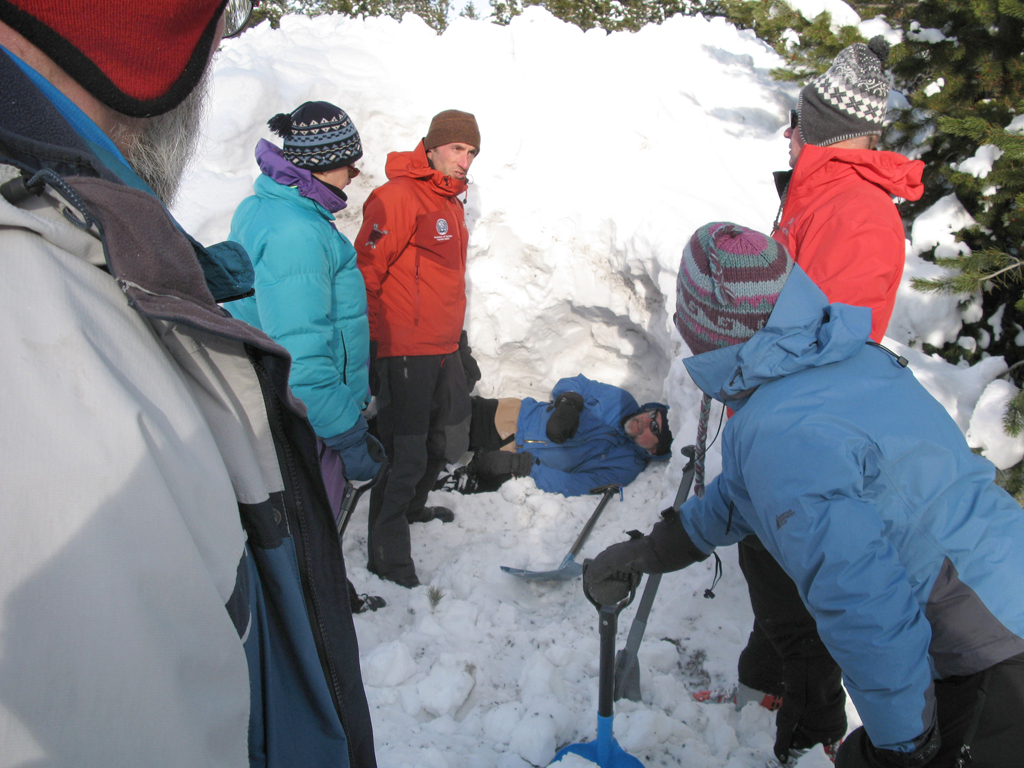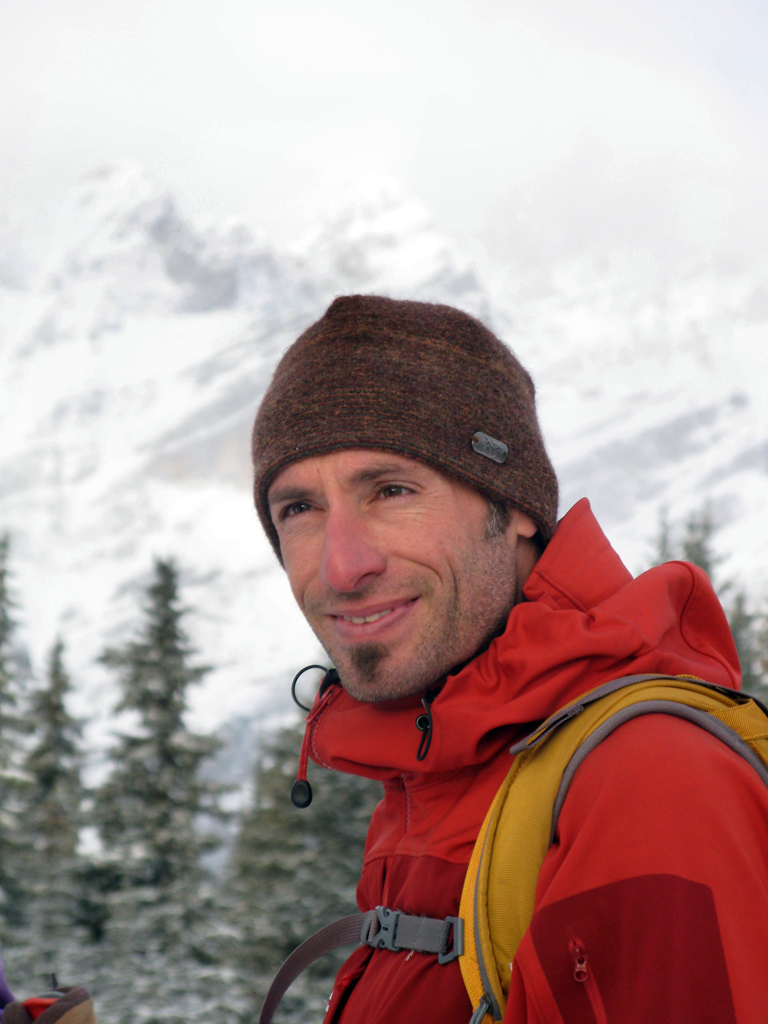By Marily Stirlchuk
Nine tour leaders from the Red Deer Parkland ski Club had the opportunity to refresh their skills and knowledge with Felix Camire, a highly experienced ACMG mountain and ski guide.((felix@elgato.ca) The refresher took place at the ACC hostel in Lake Louise and at Bow Summit on January 7, 8 and 9, 2011.
The course started on Friday night in the Guide room where we all signed waivers. At 9:00 on Saturday morning we started out at Bow summit, where we encountered cold temperatures and plenty of fresh snow. We worked our way into an open area amongst the trees and stomped out an area for practise searches of Tracker avalanche beacons and a review of the protocol for searches.
Bow summit and the weather conditions provided field terrain for looking at the wind and snow loading, including snow loading on cornices. We discussed areas considered alpine, tree line and below tree line. Felix stressed looking around to see what was above as well as below to avoid terrain traps and to find the safest route. He also dug a snow pit to look at the history of the snow pack. One way to check the stability of the snow is through compression testing for weak layers. This pit revealed at least two weak layers. Weak layers were made up of snow particles that have become faceted or rounded and were not able to cohease or stick together. These unstable, weak, sugar like layers could have a ball bearing like effect so that subsequent layers of denser
or heavier snow on top could trigger an avalanche. (This actually happened a week later in the backcountry of Alberta and BC and led to the severe avalanche conditions which unfortunately resulted in three deaths.)
Sunday morning started with additional classroom instruction. We had exceptional explanations on the Tracker beacon’s antenna direction influences, dead spots, and flux lines. Felix also pointed out some desirable features on shovels and probes, and recommended that all gear be carried inside a pack . This could prevent loss, snow damage or getting caught when travelling around trees. He stressed not using the straps on the poles if when moving around trees or in avalanche areas. He also explained the classification of the size of avalanches (1 to 5, with each increasing ten fold in force) and their degree of destructiveness. We also reviewed about the use of the new 2010 Avaluator scale for trip planning. (More information is available at the Canadian avalanche center website.)
On Sunday afternoon, we used a large, dense firmly packed parking lot snow pile to simulate avalanche debris. We had a chance to practise team shovelling techniques that would be used in an avalanche burial. Strategic shovelling is now considered a critical stage in backcountry avalanche rescue. (More information about this technique is found at www.backcountryaccess.com.) We also practised search scenarios with multiple burials. Felix stressed the importance of knowledge and keeping up to date with our backcountry avalanche safety knowledge. We were very pleased to have the guidance from a very skilled and experienced guide in our pursuit of these goals.

